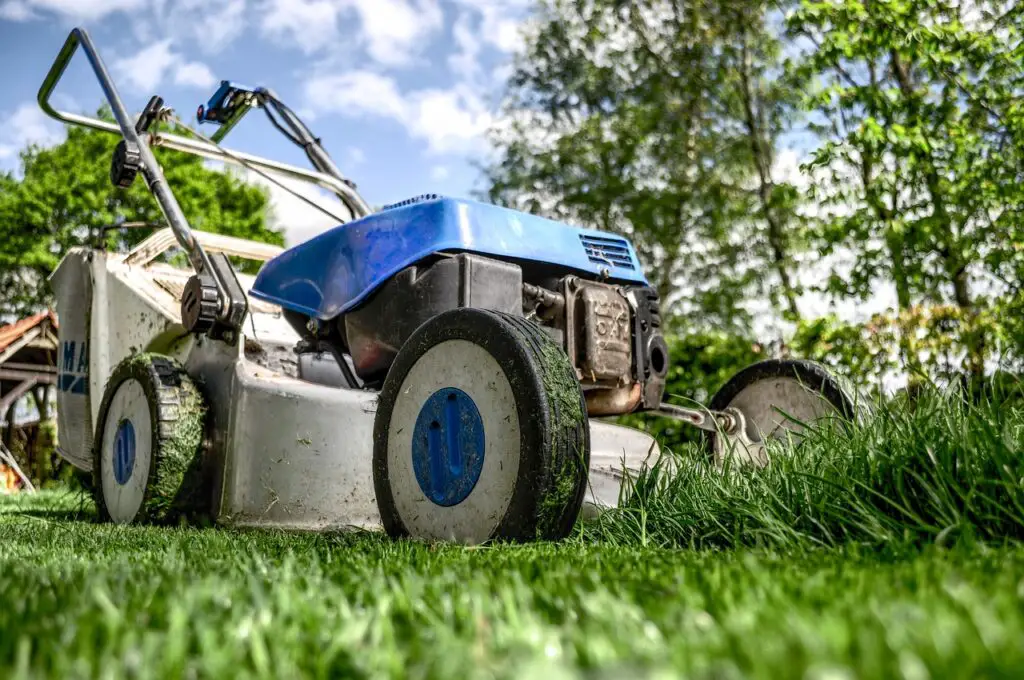A beautiful, lush, green lawn is a goal for many homeowners. Achieving this requires proper lawn care, including regular watering, mowing, fertilization, and weed control. In this article, we will discuss some tips for lawn care that will help you achieve a beautiful and healthy lawn.

- Watering
Watering is essential for the health of your lawn, but it’s important to do it correctly. Over-watering can lead to disease and root damage, while under-watering can cause the grass to dry out and turn brown. The key is to water deeply and infrequently. Water your lawn deeply once a week, rather than watering lightly more often. This will encourage deep root growth, which will make your lawn more drought-resistant.
Watering your lawn is crucial for its growth and development. To maintain a lush and green lawn, it’s essential to water it properly. You should water your lawn deeply and infrequently, rather than frequently and shallowly. Deep watering encourages deep root growth, which helps the grass to withstand drought conditions.
- Mowing
Mowing is an essential part of lawn care. However, mowing too short can stress your lawn and cause it to turn brown. A good rule of thumb is to never remove more than one-third of the grass blade length at a time. Also, keep your mower blade sharp, as a dull blade can tear the grass and make it more susceptible to disease.
Maintaining a lush green lawn requires regular maintenance. This includes mowing your lawn regularly, raking up leaves and debris, and edging along walkways and flower beds. Mowing your lawn to the right height is also crucial for maintaining healthy grass. The ideal height for most types of grass is between 2.5 and 3 inches.
- Fertilization
Fertilization is an essential part of lawn care, as it provides the nutrients your lawn needs to grow healthy and strong. However, too much fertilizer can burn your lawn and cause it to turn brown. It’s important to follow the recommended guidelines for your specific type of grass and fertilize it at the appropriate time of year. A soil test can also help you determine which nutrients your lawn needs.
Fertilizing your lawn is necessary for promoting healthy growth and lush green color. However, it’s essential to choose the right type of fertilizer and apply it at the right time. Before you fertilize your lawn, you should get your soil tested to determine its nutrient content. Based on the results, you can choose the appropriate type of fertilizer.
- Weed Control
Weeds can quickly take over a lawn and make it look unsightly. There are many ways to control weeds, including hand-pulling, using herbicides, and maintaining a healthy lawn. A healthy lawn is better able to compete with weeds, so proper watering, mowing, and fertilization are essential.

Frequently Asked Questions
Q: How often should I water my lawn?
A: It’s best to water your lawn deeply once a week, rather than watering lightly more often. This will encourage deep root growth and make your lawn more drought-resistant.
Q: When should I fertilize my lawn?
A: The best time to fertilize your lawn depends on your specific type of grass. Generally, it’s best to fertilize in the spring and fall when the grass is actively growing.
Q: How short should I mow my lawn?
A: A good rule of thumb is to never remove more than one-third of the grass blade length at a time. Mowing too short can stress your lawn and cause it to turn brown.
Q: How can I control weeds in my lawn?
A: There are many ways to control weeds, including hand-pulling, using herbicides, and maintaining a healthy lawn. A healthy lawn is better able to compete with weeds, so proper watering, mowing, and fertilization are essential.

